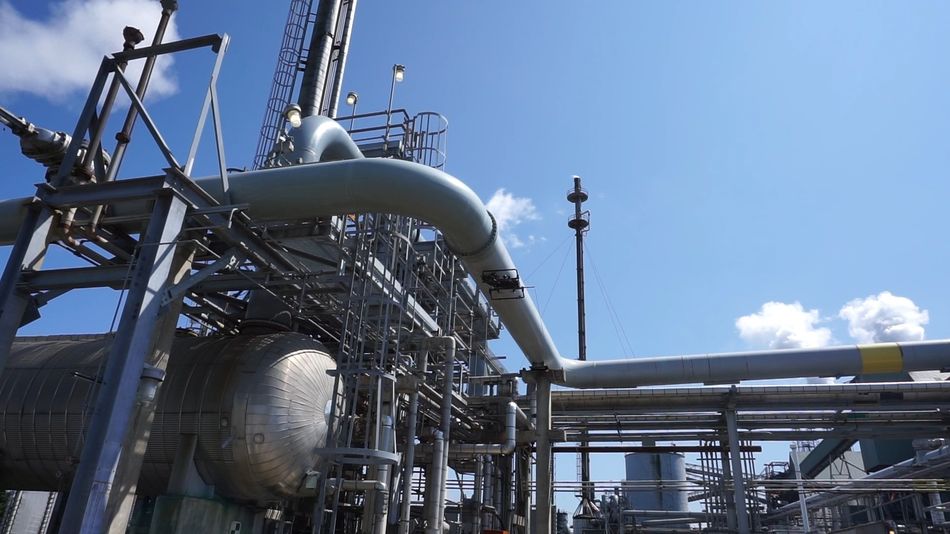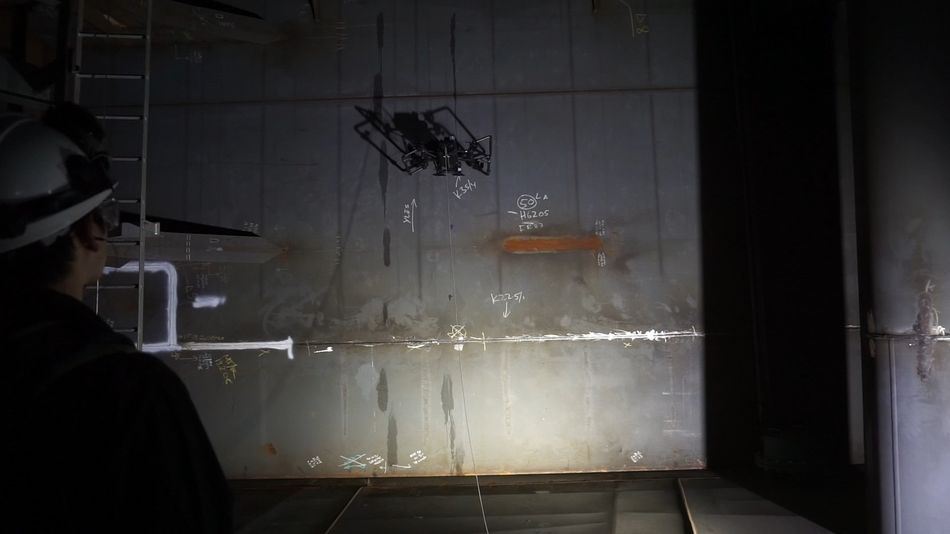Intelligent Flying Robots in Non-Destructive Testing
Intelligent Flying Robots is a revolutionary approach to Non-Destructive Testing (NDT) that enables accurate contact-based inspection to fulfill industrial asset inspection standards with many advantages.

SKYRON attaching to a pipe elbow.
Intelligent Flying Robots are a revolutionary approach to Non-Destructive Testing (NDT) that enables accurate contact-based inspection to fulfil industrial asset inspection standards with many advantages. The robot can perform remote NDT for industrial assets in some of the most challenging conditions.
The NDT conventional methods for predictive maintenance usually include scaffolding and rope access. In recent years, scaffolding has improved the speed and efficiency of temporary structures while decreasing their costs. Rope access is also an option; currently, this method reduces its cost and risk to inspectors to a minimum. However, those methods still put inspectors in dangerous positions. Scaffolding is safer than rope access because it offers inspectors a solid surface at a height rather than a harness. Yet, scaffolding still takes a long time to set up.
Using this intelligent flying robot, SKYRON inspectors can safely operate while decreasing the time and cost of the job. Using the tethered flying robot, operators can stand in safe positions distanced from potentially risky assets and heights. Furthermore, it can complete an inspection in a fraction of the time compared to rope access or scaffolding. Time saved is also in the minimal setup time and prevention of unscheduled maintenance shutdowns when monitoring the condition of industrial assets, so no productivity is lost. With the decrease in time, the cost of inspection also decreases. Lastly, the intelligent flying robot only needs a team of two: a pilot and an inspector.
A significant challenge in aerial robotic inspections is maintaining contact with assets during measurements. SKYRON overcomes this challenge by using its attachment arm to maintain constant contact with the asset. The flying robot’s Advanced Rotary Arm attaches the robot to an asset with flat or curved surfaces. Once attached, the UT gauge can perform measurements in the location. The gauge can move within a 2" x 2" square when it is attached to ensure accurate readings.
To provide accurate UT measurements, inspectors needed to overcome potential obstructions in UT readings, specifically dirt and corrosion. To manage these obstacles, SKYRON carries a surface brush and couplant reservoir. The surface brush removes physical particles, such as dirt and rust. On the prepared surface, couplant gel fills any remaining air pockets and gaps between the transducer and surface, further improving the ultrasonic coupling required for an accurate measurement.

